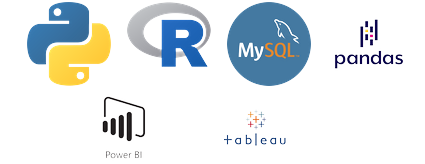- llms.txt is a plain Markdown file placed at the root of a website (e.g., https://slidescope.com/llms.txt) that serves as a curated guide to your most important content, explicitly tailored for Large Language Models (LLMs) like ChatGPT, Claude, Gemini, and others.
- It is Different from
robots.txt(which instructs crawlers what not to crawl), orsitemap.xml(which lists pages to index), llms.txt is about curating the key content you want LLMs to prioritize during inference.
What is LLM?
LLM (Large Language Model) is an advanced artificial intelligence model trained on massive amounts of text data to understand and generate human-like language.
An LLM is a type of AI that can:
- Understand text and questions
- Generate answers, summaries, stories, or code
- Translate languages
- Assist in chatbots, writing tools, and more
Examples:
- ChatGPT (by OpenAI)
- Claude (by Anthropic)
- Gemini (by Google)
They are used in search engines, content creation, customer support, and education.
🧩 Why LLMs.txt Matters
- Traditional browsing of websites by LLMs often struggles with HTML noise (menus, scripts, ads), leading to incomplete or inaccurate understanding.
- An
llms.txtfile helps LLMs find and fetch clean Markdown representations of pages, making content easier to parse and increasing accuracy in AI-generated responses.
🏗️ Structure & Design of LLMs.txt file
A typical llms.txt file is structured in Markdown, with:
- A single H1 header for the site name.
- A blockquote summary describing the site’s purpose and audience.
- H2 sections (e.g.
## Docs,## API,## Optional) listing links to corresponding.mdfiles or content pages. - An
## Optionalsection to mark secondary resources that LLMs can skip if context space is constrained.
Example Structure:
# Your Project Name
> Short description of your site or purpose.
## Docs
- [Quick Start](https://example.com/quickstart.md)
- [API Reference](https://example.com/api.md)
## Optional
- [Blog Archive](https://example.com/blog.md)
How the links are organized and labeled helps guide LLMs toward your highest-value content.
🧪 Adoption & Real‑World Use of LLMs.txt file
- The concept was introduced by Jeremy Howard in 2023 (via Answer.AI) as a more AI-focused alternative to SEO-centric standards.
- Platforms like Webflow, Mintlify, Cloudflare, and developer tools like FastHTML and Anthropic have started supporting or experimenting with
llms.txtimplementations. If you have a wordpress website and you are using plugin like Yoast SEO, this file will be automatically added in your website and a new sitemap https://slidescope.com/llms-sitemap.xml will also be added automatically. - At present, major LLM providers (OpenAI, Anthropic, Google, etc.) have not officially stated they consume
llms.txtfiles, though early monitoring suggests some models/agents are crawling or indexing them.
✅ Practical Considerations
- If you own or manage a website, particularly tech docs, blogs, or APIs, adopting
llms.txtmay give you a future edge in AI visibility and control. - If you’re just browsing or encountered
llms.txton someone else’s site like SlideScope, it likely offers a structured overview for AI models to access key resources more easily.
In Summary:
llms.txt is an emerging AI‑first standard designed to help LLMs navigate and understand your website in a cleaner, more structured way. Think of it as a curated summary for AI agents—complementing, not replacing, traditional SEO files like robots.txt or sitemap.xml.
What Is GEO?
Generative Engine Optimization is the process of optimizing your content to appear in AI-generated answers, especially from LLMs like ChatGPT, Gemini, Claude, Perplexity, etc.
Think of it as the next generation of SEO, tailored for how AI systems retrieve, summarize, and present content — not just how search engines index it.
🤖 How LLMs Help in GEO
✅ 1. Generate GEO-Optimized Content
LLMs can:
- Write high-quality summaries.
- Create clean, Markdown-formatted content that LLMs understand better.
- Structure FAQs, how-to guides, and lists that are LLM-friendly.
✅ 2. Identify and Organize Helpful Content
LLMs can help:
- Identify top-performing questions and answers.
- Suggest ways to restructure your blog/docs for AI agents to better parse them.
- Create or improve
llms.txtand.mdfiles.
✅ 3. Create Structured Metadata
They can generate:
- JSON-LD schema
- Descriptions
- Semantic annotations
to make content more LLM-parsable.
🧠 LLM + GEO Strategy in Practice
Use an LLM (like ChatGPT) to:
- Summarize your core topics in clean Markdown.
- Build an
llms.txtfile to guide LLMs. - Format your top pages in AI-consumable ways (e.g., minimal clutter, clear structure).
- Simulate user questions that models might generate — and answer them.
📌 Summary
Yes, LLMs are both the target and the tool for Generative Engine Optimization. You use them to create and organize content that will perform well inside AI answers, just like you use SEO tools for Google.


